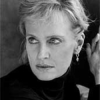Siri Hustvedt

Siri Hustvedt
Siri Hustvedtis an American novelist and essayist. Hustvedt is the author of a book of poetry, six novels, two books of essays, and several works of non-fiction. Her books include: The Blindfold, The Enchantment of Lily Dahl, What I Loved, for which she is best known, A Plea for Eros, The Sorrows of an American, The Shaking Woman or A History of My Nerves, The Summer Without Men, Living, Thinking, Looking, and The Blazing World. What I Loved and The...
NationalityAmerican
ProfessionNovelist
Date of Birth19 February 1955
CityNorthfield, MN
CountryUnited States of America
I love making up visual works of art in language. I get to be an artist without actually being an artist in that sense.
It's thought that about 96% of us have visual imagery, and there's a very tiny minority in the population, some of whom are normal, some of whom have brain lesions, who cannot produce visual imagery.
I have suffered from migraines since childhood and have long been curious about my own aching head, my dizziness, my divine lifting feelings, my sparklers and black holes, and my single visual hallucination of a little pink man and a pink ox on the floor of my bedroom.
I have a longstanding fascination with visual art. I do, in fact, draw as well, as I did in 'The Summer without Men.' I also write essays about visual art.
I continue to write essays about art. The visual is always part of my work, and it gives me immense pleasure to make up the words of art and create them verbally rather than build them.
Years ago, when I was in Siena for the first time, I saw the works of Duccio, whose deeply emotional painting from the thirteenth century has never left me.
When I was an impoverished graduate student, I would sometimes spend $20 or $30 on a T-shirt or accessory I didn't need or even particularly want. What I craved was the purchase, not the thing itself. Of course, a sense of not being deprived may fill an emotional void without ruinous consequences.
When I don't get enough sleep, I am cranky, vulnerable to headaches, and my concentration is poor.
I watched 'Holiday' in college, and that was when I had my first fantasy of being Katharine Hepburn, standing at the top of the staircase in a huge Hollywood mansion.
My parents were gigantic influences on me. I had a deep hunger to impress my father, who was a professor and an intellectual. I wanted his approval.
I saw Joseph Cornell's lyrical work for the first time at the Museum of Modern Art in the late seventies and have internalized many of his boxes.
Our great cultural error is to assume that 'truth' arrives only through reductive theories.
It's hard to penetrate characters who are very cut off and lack empathy and to do it with sympathy. It's so easy to make a damaged character repugnant.
The mind-brain is lived only from a first-person perspective, and it is a dynamic, plastic organ that changes in relation to the environment.